Tabor Farmers Struggle With Parched Crops
Air Date: 08/20/2012
Newsroom
By Kealey Bultena
Crop reports and news headlines broadcast details about crippled corn fields across South Dakota. But the numbers don’t fully quantify the challenges farmers face when they stare down a nearly waterless summer. In today’s Dakota Digest, meet some southeast South Dakota farmers who offer a view from inside their tractors.
It’s a warm August afternoon. The sky is pure blue dotted with weightless white clouds. Golden bales slump together a hundred yards away. Chunks of plants formerly known as corn stalks plunge to the ground from a worn wagon. Then a member of the Sestak family coerces his tractor’s wheels back and forth on a pile of the shredded crops. The machine perches at least four feet above the ground.
The shards of corn stalks trucked a few miles from their field near Tabor. This is the first load of freshly severed silage for the afternoon. About half an hour before, three farmers had lunch at the bar.
People who live in small towns know a person learns a lot at the local watering hole. Farmer Terry Sestak says that’s true - most years.
"I’ve been telling people that the standard answer this year for a lot of questions is ‘I don’t know,’ because we haven’t experienced quite this severe of a drought ever to any of our knowledge," Terry says. "And even you talk to older people '30s, at least we had some releife from the heat once in a while."
Terry says his fields of corn couldn’t endure so many days of scalding sun and hundred-degree heat. Terry peers through think glasses as he warns of the devastation he sees on his farmland and how his farming family tries to save the investments.
"The corn is short. Maybe four foot, five foot tall in places, dry," Terry says. "So to get some salvage value out of it in feed and to make up for what we’re missing on hay and alfalfa and other forages, we need to get it someplace."
That means less talk, more work. After lunch, the men hop into their farm pickups and hit the gravel. They arrive at the half-harvested field and saunter onto parched earth.
Walking through the field just a couple of miles outside of Tabor, you can see just how distressed the corn became. There aren’t ears on most of the crop, and there are these large sections that are broken in half. They just fell apart.
The men work to clear Terry’s cousin’s field. Ron Sestak clambers into a reddish tractor coated in a thin layer of dust. The tractor lurches forward, with cutting equipment in tow.
"The fields are a lot harder than normal, they’re rougher than normal. Normally the corn would be near our heads sitting in the cab here," Ron says. "This year, it’s not even the height of the tires. A lot of difference looking at today compared to a good year."
Ron carefully maneuvers the tractor to ensure the machinery hitched to the back bulldoze three rows of corn with each pass. It’s easy to view withered corn stalks in patches all over the yellowed field. Ron turns the wheel and muses about his other rural endeavor: his cattle.
"Usually cattle go out in May to pasture and bring them in, start feeding them in early to mid-September and after that into the corn stalks in fall and winter, but now it’s gonna be a day-by-day type of deal and depending on what comes ahead: how long we have to feed and when we have to bring them back out," Ron says."
Ron says he anticipates up to eleven months of having to feed his cattle. He says he’s worked the land for more than 40 years. Ron doesn’t remember a drought this bad, even from his childhood.
"You take it one day at a time. You make the deicision, and whether that’s right or wrong, you have to live with it," Ron says. "You always hope to make the right decision and the one that costs you the least amount of money in the end."
Ron cranes around to peer through the cloudy back window of the tractor to gauge whether he has space in the wagon chop down another few rows of corn. He doesn’t; minced stalks scatter from the top of the wagon walls.
The tractor bounces back, crossing the field to where Ron’s cousin Terry stands with an empty wagon. Terry unhitches the wagon full of food for his cousin’s cattle and hooks up an empty one. Ron wheels back onto the field, sweeping more stalks into the shredder. Terry moves swiftly to exchange the wagon of crisp silage with another empty. He needs to get back to the field in time for the next load.
"Going into next year, well, we’ll see what winter bring and if we have any moisture in the spring. That’s a very key point – and moisture into the fall and moisture in the spring," Terry says. "I don’t know. But you get to a point, you gotta make a decisions. Well, so decisions like now have been made. We’ll cut the corn. Chop it because there isn’t anything there. Maybe we’ll chop more because spring might be dry and there might not be any grass. And it’ll take us to a certain point, and when we get there, we’ll make that decision again."
South Dakota farmers have months to worry about what lies ahead. For now, Terry climbs back onto his worn tractor as he focuses on salvaging what he can from 2012’s dessicated season.
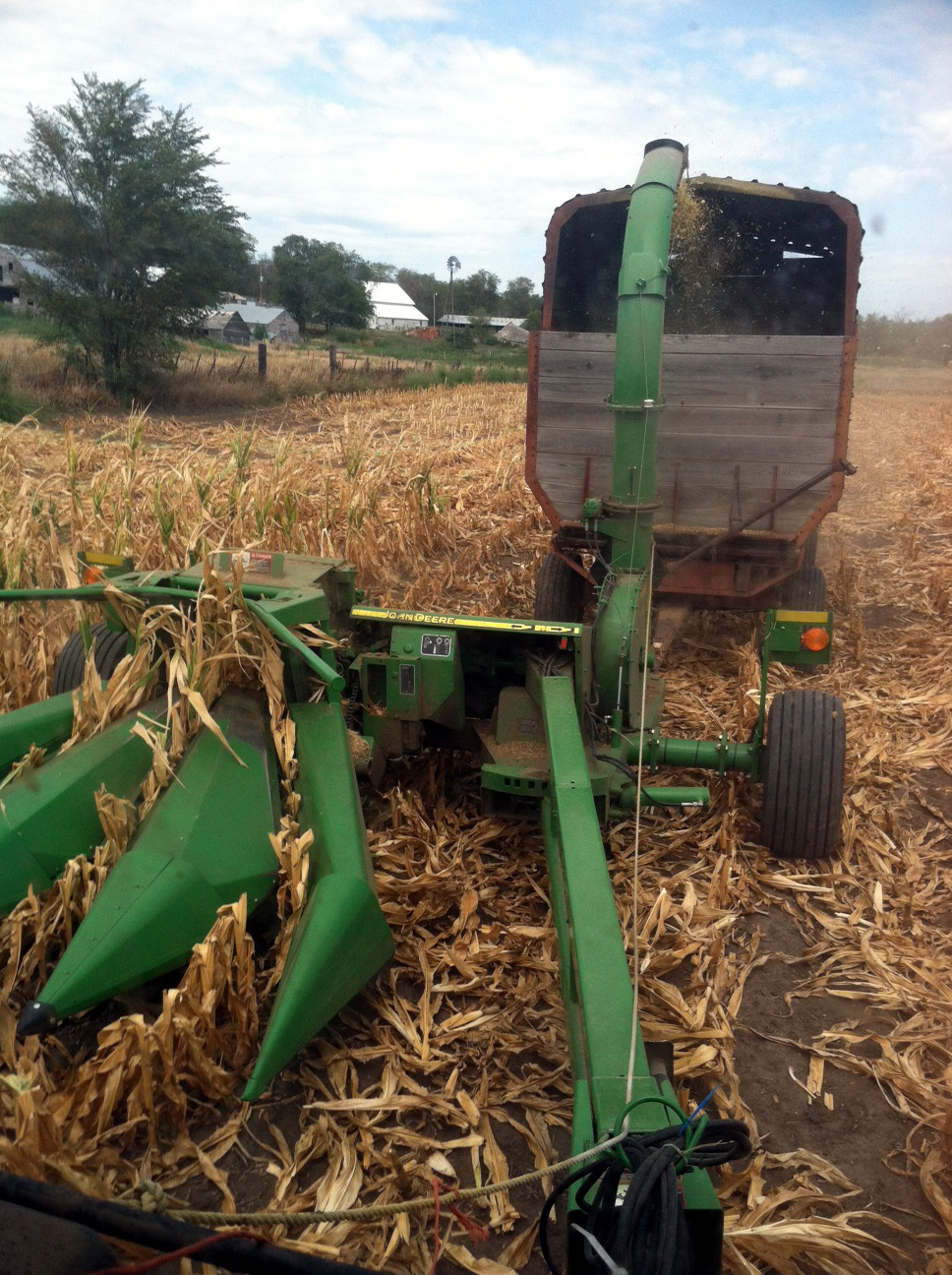
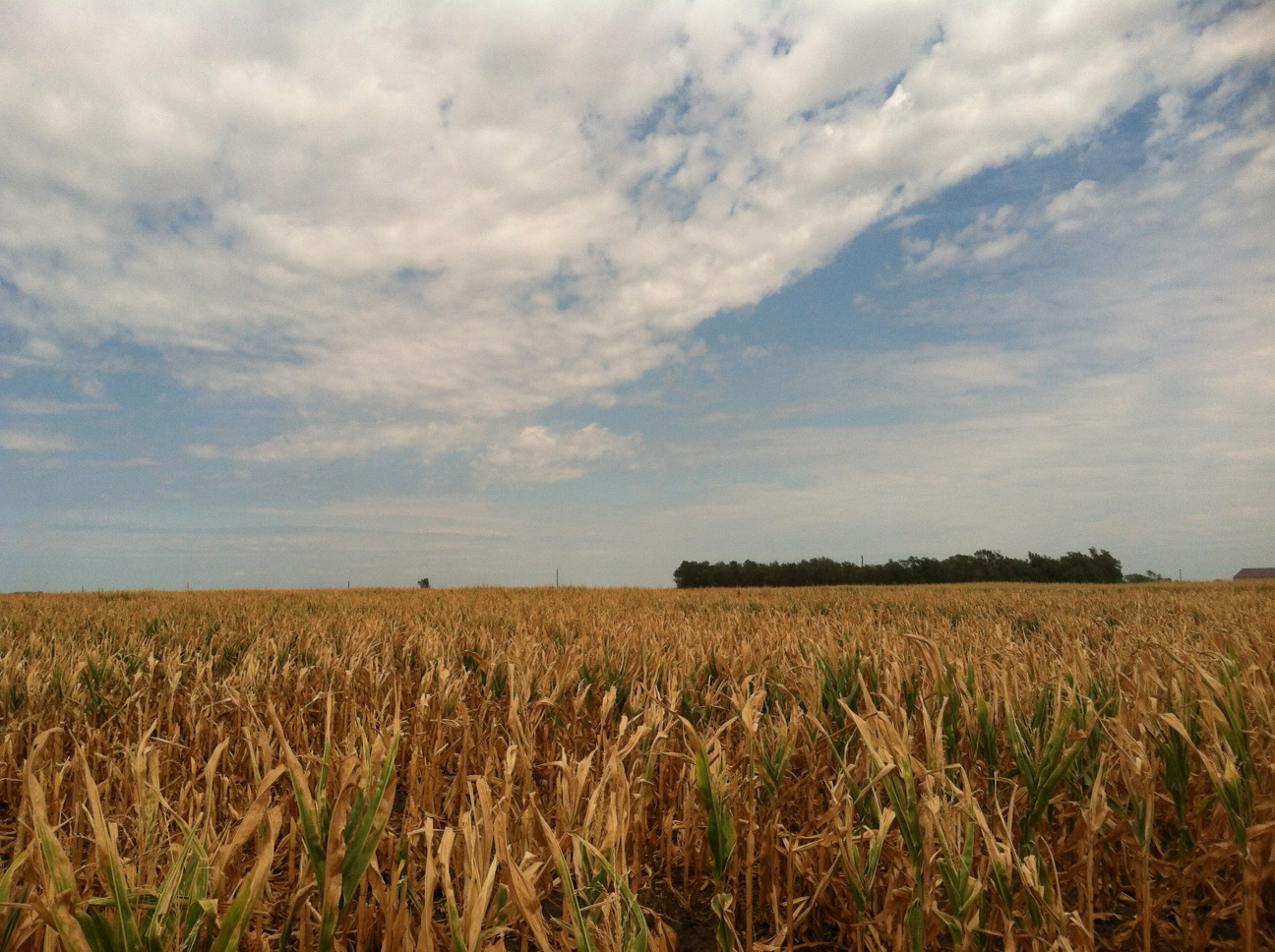
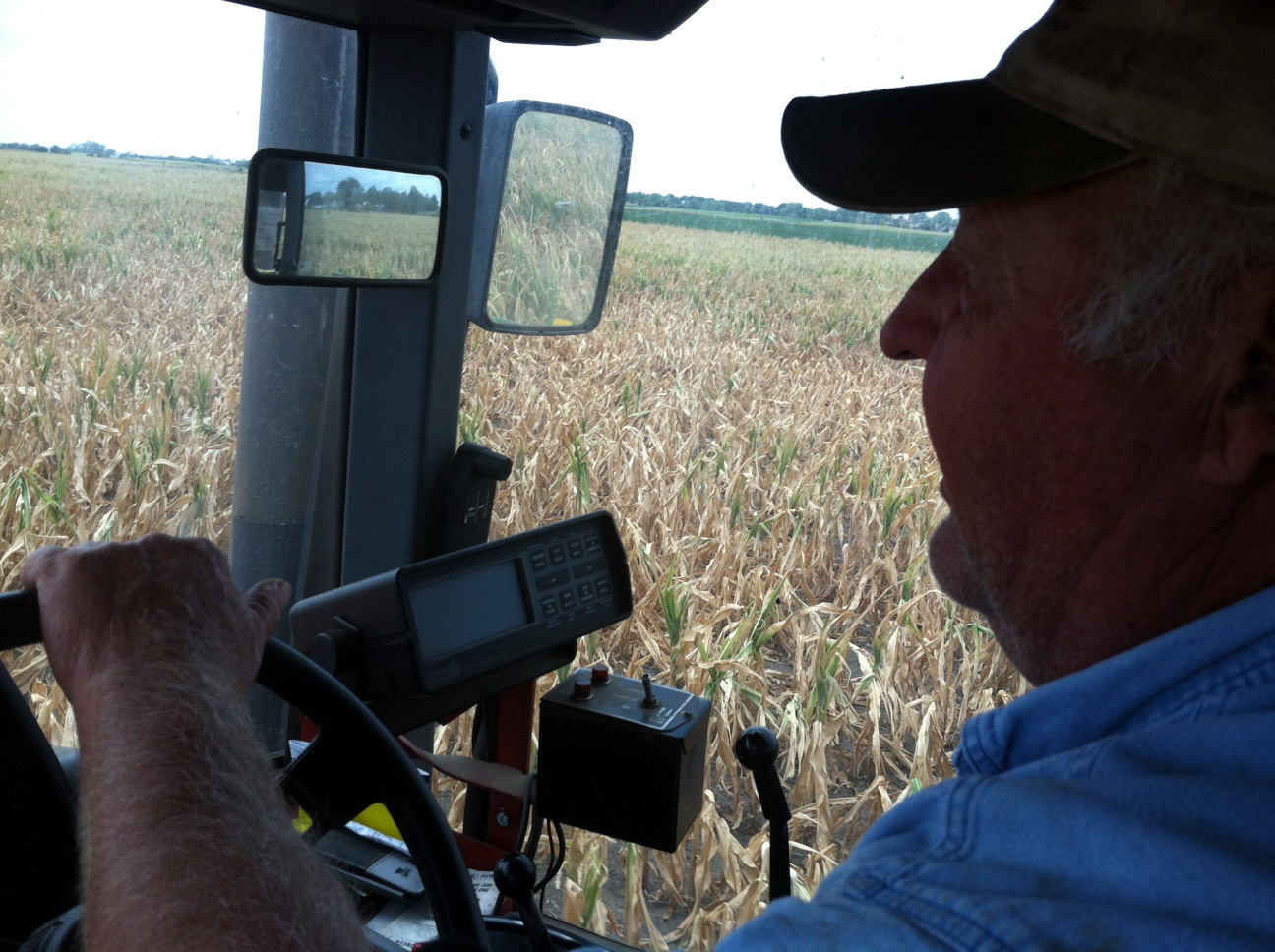
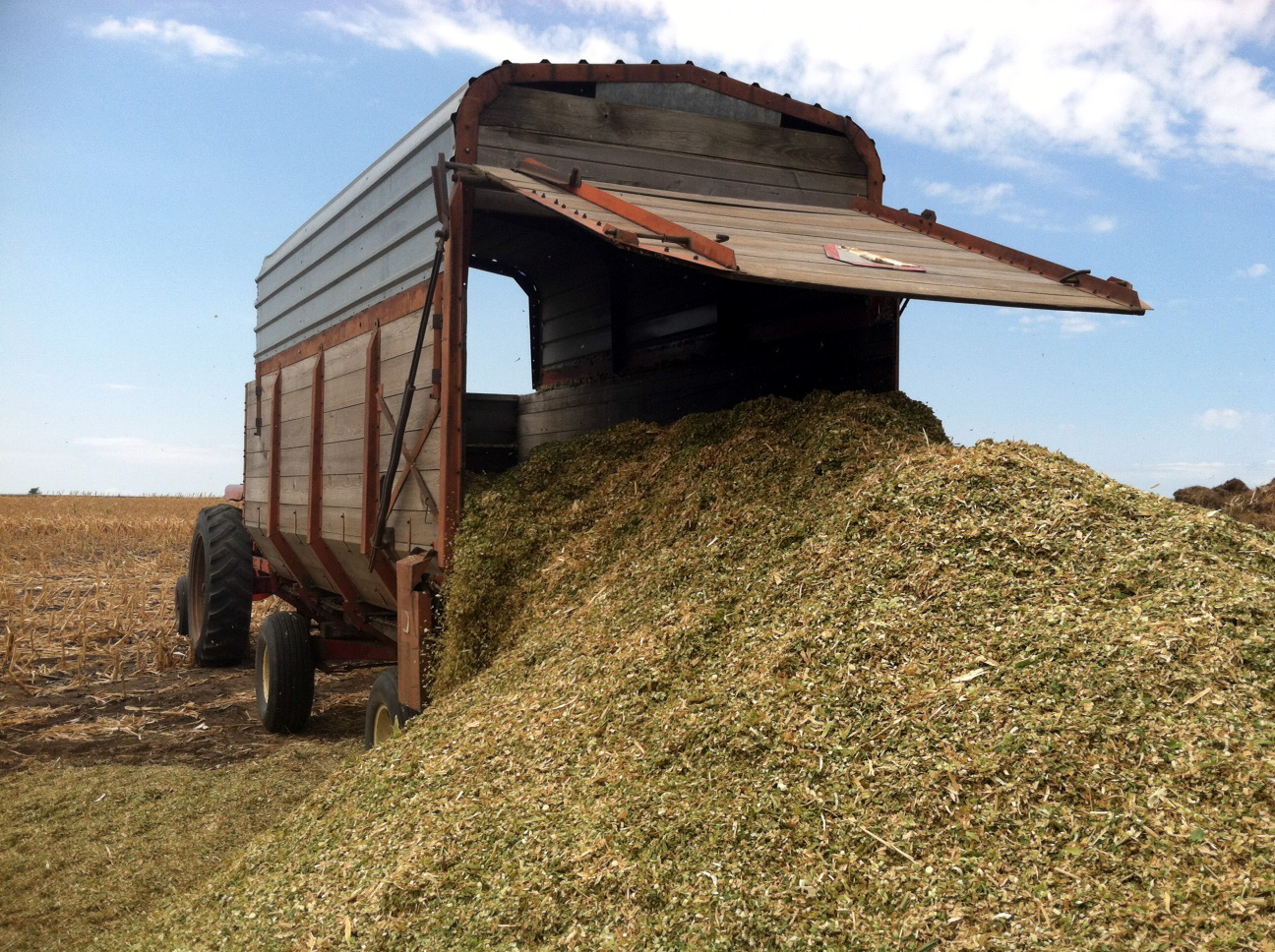
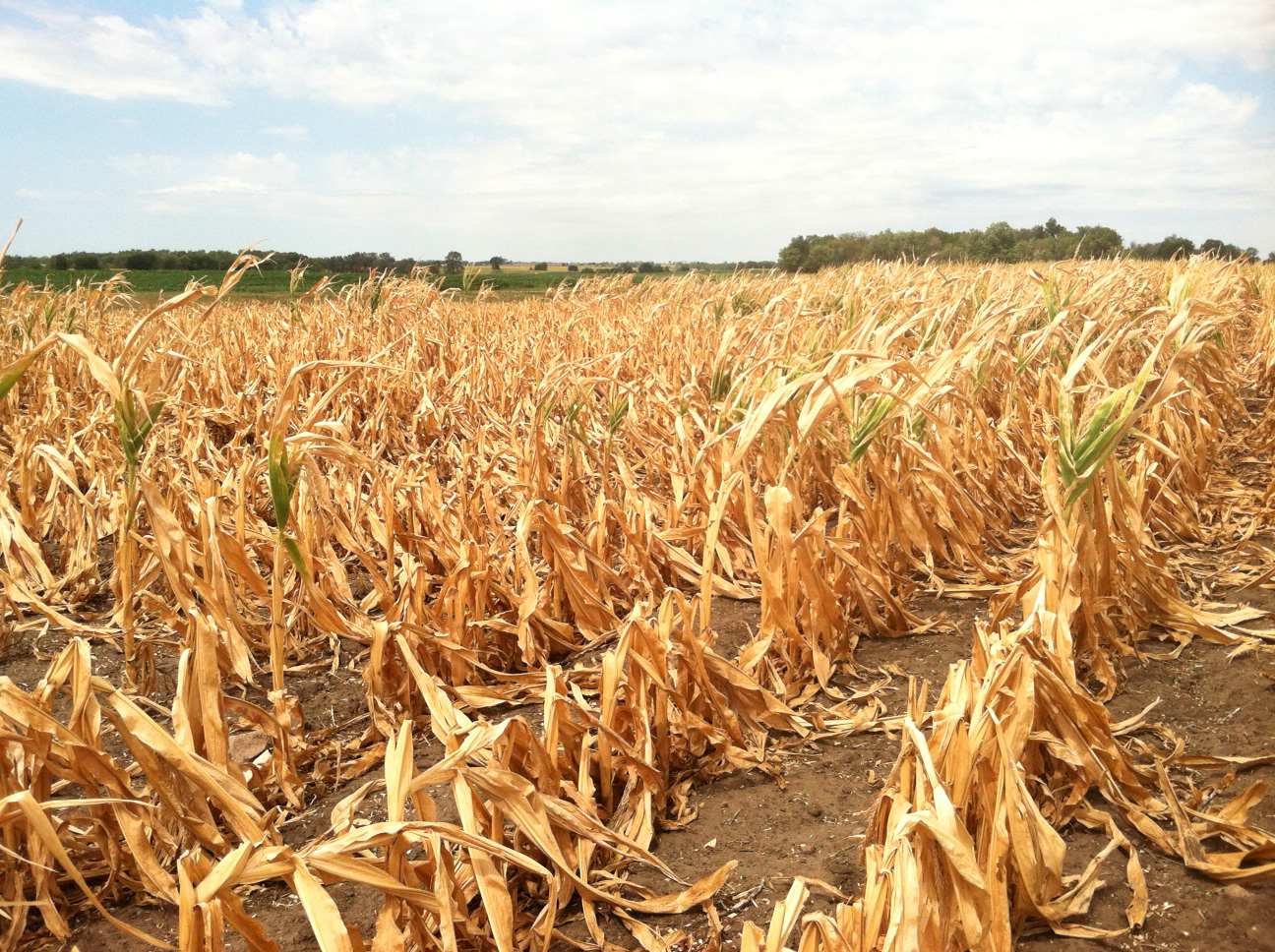
![]()
![]()
![]()
![]()
![]()
Click here to play Real Media:









